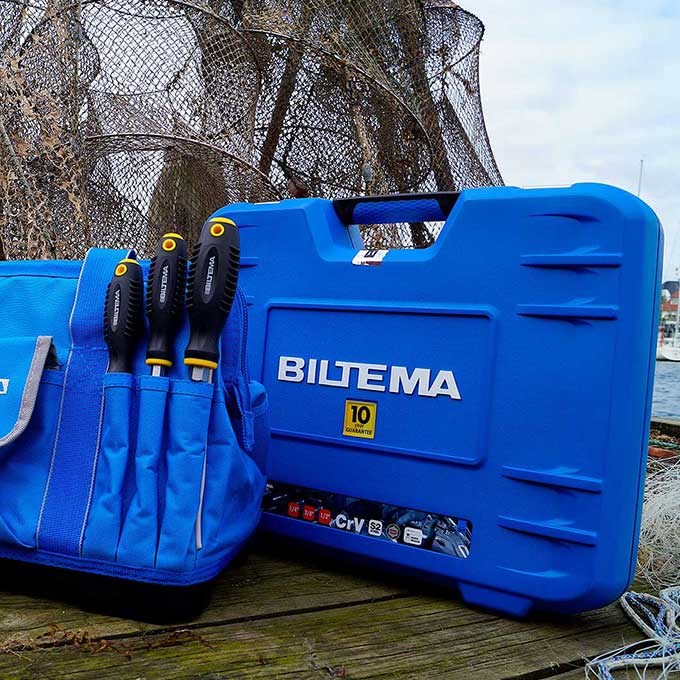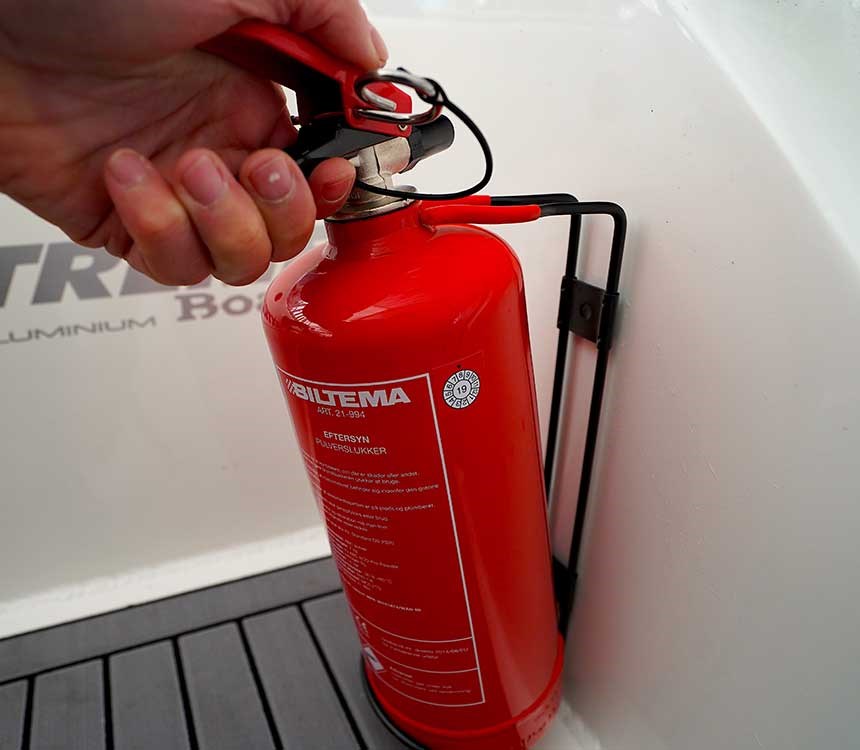Winterising Your Boat Engine: How to Keep Your Engine in Top Condition
Properly performed winterising can extend the life of your engine, minimise unexpected repairs, and ensure that you are ready to set sail as soon as the weather permits.
In this in-depth guide, we explain how to best winterise your inboard or outboard motor so you can keep your boat engine in top condition year after year.
Difference between inboard and outboard motors
Before we dive into how to winterise your boat engine, it is important to understand the difference between an inboard motor and an outboard motor. Because the winterising procedure depends on the type of engine your boat has.
An inboard motor, as the name suggests, is an engine that installed inside the boat. This type of engine is typically more powerful and often found in larger boats. Popular brands include Volvo Penta, Nanni, Yanmar, and MerCruiser .
An outboard motor, on the other hand, is mounted at the aft of the boat, and it’s ideal for smaller boats. It also particularly popular among anglers and sailors, and well-known brands include Evinrude, Mercury, Yamaha, Tohatsu, and Honda .
When it comes to winterising, it’s important to note that the process is different depending on whether you have an inboard or outboard motor. We will guide you through the processes on this page, so that you can keep your engine in top condition.
What does it mean to winterise a boat engine?
Winterising a boat engine is very important for ensuring the performance and service life of your boat. When the boating season is over and you retrieve your boat from the water, cold temperatures, humidity, and the boat’s inactivity can damage the inboard motor if it is not properly prepared. And that’s where winterising comes in.
It is a process of preparing the inboard motor for the long, inactive winter period. It involves more than just draining the engine of water. It also includes steps like changing the oil and filter, cleaning and checking the different engine components, lubricating moving parts, and in some cases, adding stabiliser to the fuel. The reason for this is to minimise the risk of corrosion, frost damage, and other types of damage that may occur during winter storage.
It’s important to note that although winterising is primarily relevant in cold climates, it’s a good idea to do some of these steps even if you live in a milder climate. A long period of inactivity can also damage an engine, even in temperatures that don’t drop below zero.
Proper winterising can extend the service life of your engine, save you costly repairs, and ensure that you’re ready to take to the water again as soon as the boating season begins.
Main elements in winterising an inboard motor
Winterising your boat engine can be a complex process, but it’s a necessary task to make sure your inboard motor is ready to meet the challenges of winter. Here is a list of elements you need to deal with when preparing your engine for winterising:
Engine cooling system
When it comes to inboard motors, there are two primary cooling systems: saltwater-cooled and freshwater-cooled engines.
- For saltwater-cooled engines, it is crucial to flush the system with fresh water to remove salt residues that can cause corrosion.
- Freshwater-cooled engines must also be flushed through to ensure that all dirt and algae have been removed.
- Begin the process by starting the engine and letting it run until it reaches operating temperature.
- When the engine is warm, you can shut off the seacock (if your boat has one) and connect a water hose to the engine cooling system inlet.
- Run water through the system until it comes out clear.
- Check the thermostat: if the thermostat does not open properly, it can cause overheating and possibly damage your engine.
- A faulty thermostat must be replaced.
After the cooling system has been flushed, you should check the impeller in the water pump. A faulty impeller can prevent the cooling system from working effectively and can cause serious damage to your engine. Check the impeller for visible cracks, worn edges, or missing fins. If the impeller shows signs of damage, it should be replaced.
Oil and fuel system
One of the most vital tasks in winterising your inboard motor is changing the oil and servicing the highly sensitive fuel system.
Engine oil is very important for the health of your engine:
- It helps cool the engine by carrying heat away from the moving parts
- It prevents corrosion
- And it helps seal the engine and prevent contamination and sludge.
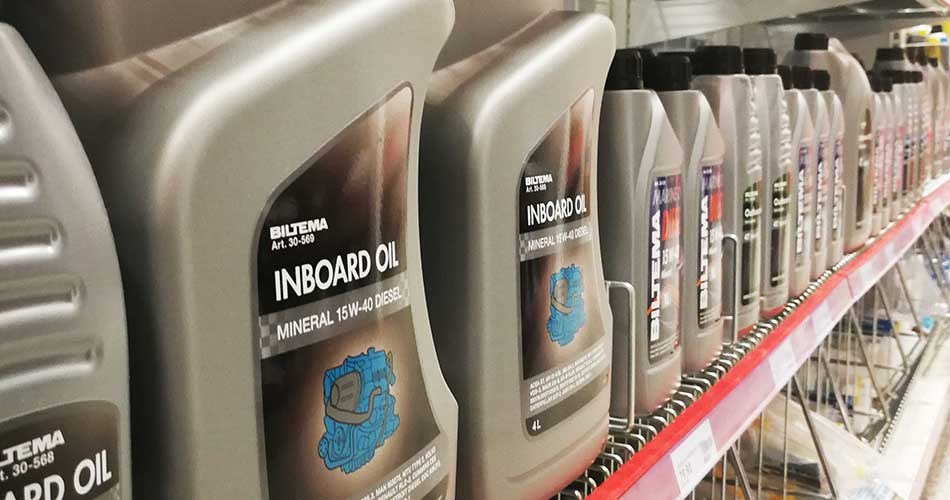
Therefore, it is important to change the oil before winter. And now we will explain how to do so.
- Start by running the engine for a few minutes to warm up the oil.
- Hot oil is easier to pump out and will clear out more contaminants from the engine.
- Pump out the oil using an oil pump and change the oil filter at the same time.
- Pour in new oil and check the dipstick to make sure you have the correct amount of oil.
The fuel system is another very sensitive part of the engine that needs to given attention. If your engine has a carburettor, make sure to drain it to prevent the fuel inside from going stale. For boats with injection systems, you can add a fuel stabiliser to the fuel to help prevent it from dissolving.
Finally, remember to run the engine for a few minutes after changing the oil and servicing the fuel system. This ensures that the new oil is circulated through the system and that the fuel stabiliser mixes fully with the fuel.
Typical challenges when winterising an inboard motor
Winterising of a boat engine can present a number of challenges. Here are some of the most common, as well as a few tips on how to fix or avoid them:
- Faulty thermostat: A faulty thermostat can prevent the engine cooling system from working properly, which can result in overheating. If your thermostat is faulty, you should replace it as soon as possible to avoid damage to your engine.
- Defective impeller: The impeller is a crucial component of your engine’s cooling system. If damaged, it can prevent proper cooling and lead to overheating. You should regularly inspect your impeller for visible damage and replace it if necessary.
- Overheating: Overheating can damage the engine and can be caused by several problems, including a faulty thermostat, a damaged impeller, or insufficient oil. You can prevent overheating by ensuring that these components are in good condition and that your engine has sufficient oil.
- Visible cracks: Cracks in engine parts can cause oil and fuel leaks. You should regularly check your engine for cracks, especially before winter, and get any cracks repaired as soon as possible.
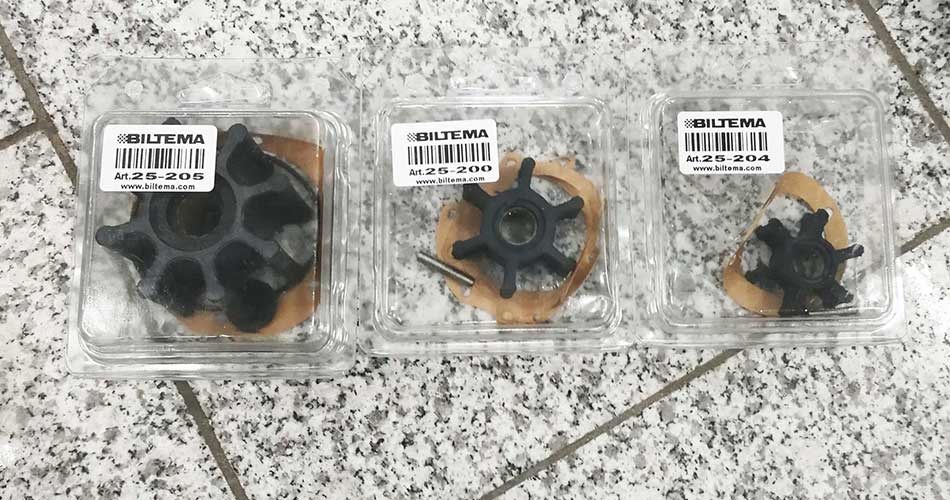
Maintaining inboard motor impellers
The inboard motor impeller, often called the “heart of the engine”, is very important for the overall operation of your boat engine. It is responsible for pumping the cooling water through the engine, which keeps the engine at a safe operating temperature and prevents overheating.
Regular maintenance of the impeller is therefore a crucial part of boat engine care and maintenance. Over time, the impeller fins can become worn out or even break, which can result in a non-functioning impeller. Or, in the worst case, it can cause damage to the engine due to overheating. Therefore, you need to regularly check and maintain the impeller.
But how do you do that? It involves regular checks for signs of wear or damage. If the impeller is damaged, it must be replaced as soon as possible to ensure optimal engine operation. In addition, the impeller should be flushed with fresh water after each use, especially if it has been used in salt water. This will help extend the service life of the impeller and optimise its performance.
Here you will find all of our impellers.
How to handle gases from the inboard engine
During the winterising process, you may have to deal with hazardous gases from your boat engine. Read on to find out how to handle these gases.
Exhaust gases: When running your boat engine to warm it up before oil changes, ensure that the area is well ventilated. Exhaust gases from boat engines contain carbon monoxide, a dangerous and odourless gas that, if inhaled, can cause serious illness or death. Never run the engine in an enclosed space or an area with poor ventilation.
Eliminating exhaust gases: When the engine is running, the exhaust gases must be safely diverted away from the area. This can be achieved by using appropriate exhaust pipes and ensuring that these pipes have no leaks which could cause the gases to escape into your work area.
Also remember to use appropriate personal protective equipment, including gloves and safety glasses, when working with the engine. When working in an enclosed area, it can also be helpful to have a carbon monoxide detector nearby to warn you of dangerous gas levels.
How to prepare your boat engine for next season
Completing the winterising process also means preparing your boat engine or inboard motor for the upcoming boating season.
Check the oil: As we mentioned earlier, oil changes play an important role in winterising. But it is also important to check the oil again before the start of the new season. Make sure that the engine has enough fresh oil and that there is no water or fuel in the oil that could damage the engine. Use oil marks to check the oil level and make sure it is within the recommended levels.
Check the fuel system: Winterising should also involve appropriate maintenance of the fuel system. AS the new season approaches, make sure to use fresh fuel and check whether the fuel filter is clean. Consider draining and cleaning the fuel tank to avoid any deposits.
Test run the engine: Before putting the boat into the water, start the engine on land using a water filter. This allows you to check that everything is working properly and that there are no leaks.
Look for visible damage: Also check for any visible signs of wear or damage to the engine, and replace any worn parts.
Battery inspection: Check that the battery is fully charged and in good condition. A weak battery can affect engine performance.
What you need for winterising your outboard motor
When it comes to winterising your outboard motor, it’s important to have the right equipment and products on hand before you start the job. This will ensure an efficient and trouble-free process.
First of all, you will need an engine oil specially developed for outboard motors. This oil will help lubricate the internal parts of the engine and prevent rust and corrosion. You will also need an oil filter that fits your specific engine.
In addition, you will need coolant. It is important to use a coolant specially developed for outboard motors, as it will help protect the engine during the winter.
A rustproofing spray is also a necessity. This spray will help protect the external parts of the engine from both rust and corrosion.
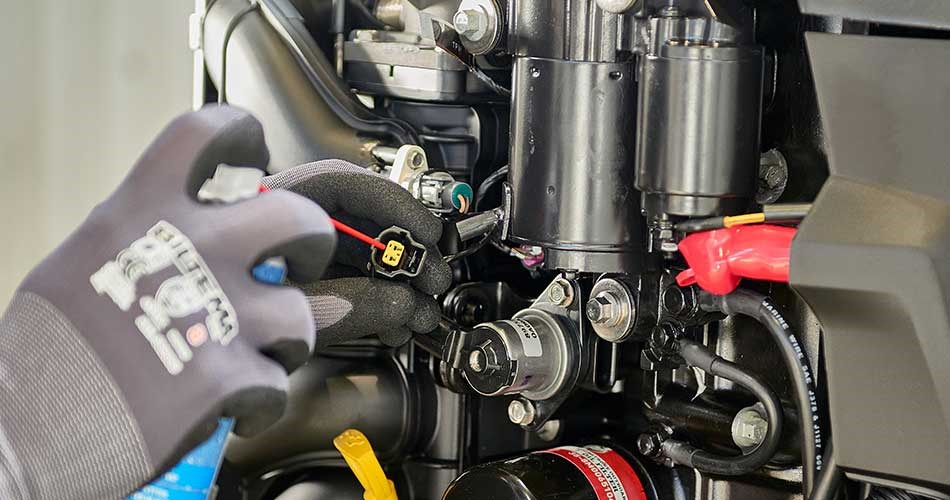
You will also need various tools to do the work such as a screwdriver, a pair of pliers, and an oil extractor. You may also want to have a cloth on hand to wipe up excess oil and coolant.
Finally, you will also need a good, solid tarp to cover the engine when the work is done. This will help protect the engine from the weather during the winter.
How to winterise your outboard motor
Winterising your outboard motor is an important part of boat maintenance. Follow our guide on how to get your engine ready for the winter rest period.
- Start with a cleaning: Start by giving your outboard motor a thorough cleaning. Use a soft brush and a mild soap to remove dirt and salt residue. Rinse with fresh water and allow the engine to dry. If you skip this part, you run the risk of dirt and debris accumulating and impairing engine performance.
- Drain the fuel system: The next step is to drain the fuel system to prevent old fuel from getting stuck in the system. To do this, start the engine and let it run until it runs out of fuel.
- Change the oil: Old oil residues can contain harmful substances that cause corrosion during the winter, and it is therefore important that you change the engine oil before winter comes.
- Top up with fresh coolant: An often-overlooked part of winterising is the coolant. The coolant plays an important role in keeping the engine cool, so it’s essential that you check and change the coolant when winterising. This will help protect your engine from frost damage and corrosion during the winter.
- Winterising spray: Finally, spray a winterising spray into the air intake while the engine is running. This will prevent rust and corrosion in the internal parts of the engine.
- General maintenance: Winterising is also a good chance to check the general condition of the engine. Don’t forget to check and maintain components like spark plugs, the fuel filter, and impeller.
- Winter storage: Lastly, it’s time for you to store your outboard motor in a dry and frost-free area. Many people think that just pulling the boat up on land and leaving it there over the winter is sufficient. But the engine must be stored in a dry and frost-free area to prevent damage. It’s a good idea to cover it with an engine cover or tarp to protect it from dust and moisture.
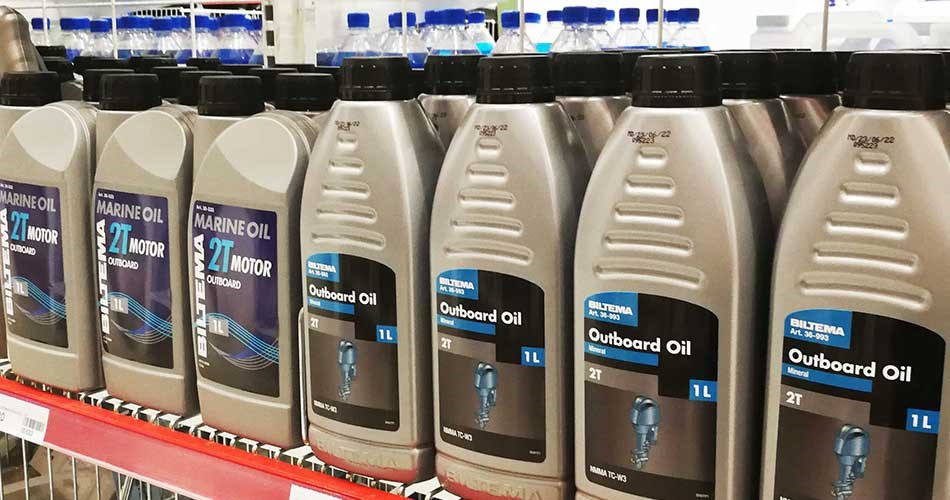
Winterising your outboard motor may seem like a big task, but it’s an investment into your boat’s future. With the right care and maintenance, you can extend the service life of your engine and ensure that it’s ready for the next boating season.
Here you will find all of our motor oils for boats.

